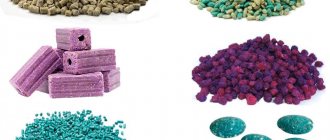According to the US National Institute for Occupational Safety and Health, the concentration that can cause phosgene poisoning and put a person at risk is only 2 parts per million.
Since phosgene is a colorless gas at room temperature, the main route of poisoning is inhalation. Its exposure can cause damage to the lungs, and as a result, damage to the circulatory system and brain. Due to poor water solubility, one of the signs of poisoning is an unpredictable asymptomatic latent phase preceding the development of pulmonary edema. Contact with liquid phosgene can cause frostbite. Treatment for exposure to this substance involves prompt removal from the body and supportive medical care in a hospital setting.
Use of phosgene in production
Phosgene, in its effect on the body, can be classified as a toxic substance. It is constantly used in the industrial sector. In chemical factories it is produced in large quantities, since this gas is very active in addition reactions with many substances.
Phosgene is most often used for phosgenation reactions in organic synthesis. It is used for:
- obtaining polycarbonates,
- production of urea and its derivatives,
- production of various dyes,
- when isolating anhydrous metal chlorides,
- as a raw material for the production of certain medicines, pesticides, and solvents.
Previously, the mixture in gas fire extinguishers included carbon tetrachloride. As a result of its connection with air during fire extinguishing, an oxidation reaction occurred, leading to the formation of phosgene. Thus, anyone who used a gas fire extinguisher in a fire could become seriously poisoned by this toxin. Subsequently, gas fire extinguishers were discontinued.
Interesting! Phosgene was used by the enemy as a chemical warfare agent during the First World War. In open areas where the enemy sprayed this asphyxiating gas, the smell was caught by people very late, since the human olfactory organs can recognize it at a concentration of 4.4 mg/m3. The concentration of phosgene in inhaled air that is dangerous to life and health is 0.5 mg/m3.
Receiving [edit | edit code ]
Phosgene was first obtained by Humphry Davy in 1812 by irradiating a mixture of chlorine and carbon monoxide with sunlight [3].
We recommend reading: Positive diaskintest in an adult: what to do
CO + C l 2 → h ν COC l 2 >>>>>> 2>
Davy named the resulting substance “phosgene” (English phosgen, lit. “light-born”, from the ancient Greek φῶς “light” and γίγνομαι “I generate”) [3].
Phosgene is also formed during the oxidation of chloroform by atmospheric oxygen under the influence of light:
2 CHC l 3 + O 2 → h ν 2 COC l 2 + 2 HC l +O_>>>+2HCl>>> 2>3>
In industry, it is obtained by heating CO with Cl2 in the presence of coal:
CO + C l 2 → t , CCOC l 2 >COCl_2>>>> 2>
In the laboratory, the following can be easily obtained by gently heating a mixture of CCl4 and SO3 (or oleum):
2 SO 3 + CC l 4 → S 2 O 5 C l 2 + COC l 2 +CCl_ ightarrow S_O_Cl_5>2>+COCl_2>>>> 2>4>3>
Phosgene is also formed during the combustion of some chlorine-containing freons, as a result of which smoking is prohibited when servicing refrigeration machines and installations.
After a few days, with proper treatment and strong immunity, the patient experiences a decrease in negative reactions. A victim of phosgene poisoning is given first aid and sent to the hospital.
Dangerous but necessary
We all live in an industrial age, so it is impossible to imagine our life without the chemical industry. To produce various raw materials, large amounts of certain toxic substances are required. Phosgene is no exception. No matter how dangerous this toxic gas is, it is necessary in industry. For example, it would be impossible to produce polycarbonates without the use of phosgene. This gas also plays an important role in the production of paints and varnishes. Pharmacology also uses phosgene in the production of various medicines and drugs.
Routes of entry of phosgene into the body and reaction to it
The most likely way of becoming infected with toxic phosgene in peacetime is an accident at a chemical production facility or an explosion of a gas cylinder during transportation. In the air, phosgene is located in the lower layers, since it is much heavier than oxygen. In an open space, this gas will dissipate within half an hour, but if it is sprayed indoors or in a forest, the dispersal time will increase many times.
Phosgene is not dangerous if it settles on water, clothing, or skin. It’s not for nothing that its effect was called suffocating. Only upon contact with the respiratory tract can it have a negative effect on human health. Phosgene instantly settles on the mucous membranes and begins to be absorbed and decompose into two components: carbon dioxide and hydrochloric acid.
In the future, carbon dioxide will be removed from the body when exhaled, and hydrochloric acid will be neutralized by the body. But this will happen if a person inhales a minimal amount of phosgene. With a high concentration of gas in the air, poisoning with this substance, unfortunately, will not go unnoticed by the body.
The first signs of poisoning will appear as an unpleasant taste in the mouth, nausea, redness of the mucous membranes, a sore throat, and a possible dry cough. At high concentrations of phosgene in the inhaled air, death occurs instantly from pulmonary edema or an increase in secondary symptoms.
Basic treatment methods
There is no antidote for phosgene. Treatment is aimed at breaking the chain of pathological changes in the body.
- Oxygen therapy with inhalation of an air-oxygen mixture and antifoaming agents. Oxygen is handled with care - it is a strong oxidizing agent that triggers free radical reactions that destroy cells.
- Prevention of pulmonary edema: administration of steroidal anti-inflammatory drugs by inhalation (dexamethasone) or systemically. Inhaled forms are better (one of the systemic actions of steroids is to suppress the activity of the immune system).
- Forced diuresis (urination) to remove excess fluid from the body and relieve intoxication.
- Antibiotics for the prevention and control of pneumonia.
- Prevention of increased blood clotting.
- Sedatives to relieve stress reactions.
- Introduction of ascorbic acid. Vitamin C has an antioxidant effect. At high doses the effect changes to pro-oxidant.
In other languages
- Afrikaans
- العربية
- Azərbaycanca
- تۆرکجه
- Belarusian
- Bulgarian
- Catala
- Čeština
- Dansk
- Deutsch
- Ελληνικά
- English
- Esperanto
- Español
- Eesti
- Euskara
- فارسی
- Suomi
- Français
- עברית
- Hrvatski
- Magyar
- Հայերեն
- Bahasa Indonesia
- Italiano
- 日本語
- Kazakh
- 한국어
- Kyrgyzcha
- Lietuvių
- Latviešu
- Makedonski
- മലയാളം
- Netherlands
- Norsk
- Polski
- Português
- Romana
- Scots
- Srpskohrvatski / srpskohrvatski
- Slovenčina
- Slovenia
- Srpski / srpski
- Svenska
- తెలుగు
- Türkçe
- Ukrainian
- Tiếng Việt
This page is based on a Wikipedia article written by authors (here). Text is available under the CC BY-SA 3.0 license; additional terms may apply. Images, videos and audio are available under their respective licenses.
| Irritant (irritants) | Sneezes (sternites) |
|
| Complex |
|
- Quinuclidyl-3-benzilate (BZ, P-78)
- Phencyclidine (SN)
- LSD (K)
- Apomorphine
- EA 3167
- 1,2-Dichloroethane
- Ethylene oxide
- Polychlorodibenzodioxins (PCDD)
- Polychlorodibenzofurans (PCDF)
- Capillaries (tiny blood vessels) are damaged. Fluid from the blood enters the lungs (into the intercellular space, alveoli, small bronchi).
- The alveoli, where gas exchange occurs, are damaged. The body does not receive the required amount of oxygen.
- The synthesis of surfactant, a substance that reduces the surface tension of the alveoli, is suppressed. The alveoli collapse, stick together, and stop participating in gas exchange.
- Phosgene acts on the nerve endings of the vagus nerve - the regulation of lung function is disrupted. The alveoli are damaged even more, and breathing becomes frequent and shallow.
- The level of aldosterone and antidiuretic hormone increases. Fluid is retained in the body and pulmonary edema increases.
Let's work together to make the unique material even better, and after reading it, we ask you to repost it on a social network convenient for you. net.
Signs of poisoning
Let us repeat once again the first signs of phosgene poisoning:
- general weakness,
- unpleasant weak taste in the mouth,
- redness of mucous membranes,
- sore throat,
- dizziness,
- dry cough,
- slow breathing,
- Nausea and vomiting are possible in severe cases.
If first aid is provided promptly and promptly, the person will not feel unwell. The first period of poisoning begins - the phase of imaginary well-being. Its name fully characterizes the person’s condition during this period - he feels good and does not notice any abnormalities. If any body reactions occur, be it increased drowsiness or weakness, they can be attributed to stress or nervous tension.
Following the asymptomatic period, approximately 4-6 hours after poisoning, the phase of clinical manifestations begins. It is characterized by:
- increase in heart rate and blood pressure,
- decreased breathing, shortness of breath,
- severe dry cough
- chest pain,
- dizziness,
- skin and mucous membranes are pale with a bluish tint,
- the appearance of pathological sounds when tapping the lungs (can be detected by a specialist).
A striking clinical picture unfolds when pulmonary edema occurs. In this case, the cough becomes wet with copious sputum production up to 1-1.5 liters per day. One of the main signs of pulmonary edema is the discharge of bloody foam from the mouth along with coughing.
Literally before the patient’s eyes, the body temperature increases to 38-39°C. Breathing becomes noisy, with moist wheezing. The patient involuntarily takes a position in which it is easier for him to breathe - the “dog pose” on all fours with his head down. The skin and mucous membranes are pale to bluish, the nail beds are purple-blue.
This patient is getting worse every hour. The pulse is threadlike and difficult to palpate, blood pressure begins to decrease, which often leads to impaired consciousness. If the patient does not get better within two to three days after the onset of signs of pulmonary edema, the outcome is most often fatal.
If secondary signs of poisoning gradually disappear and the condition stabilizes, the swelling begins to subside, then the prognosis for life and health is favorable. The patient gradually begins to recover. Improvement is observed within one to two weeks.
Therapeutic measures
The victim is taken to the toxicology department. During the latent period of intoxication, symptoms may be absent, so the patient’s condition is analyzed based on the following data:
- blood pressure level;
- detailed blood test (to detect a reduced number of red blood cells and hemoglobin);
- urine analysis to detect traces of protein and single red blood cells;
- chest x-ray;
- respiratory rate (the norm for a healthy person is 18 – 20 times per minute);
- heart rate;
- palpation of lymph nodes;
- the smell of the victim's hair, skin and clothing.
What to do if poisoning occurs
Since phosgene affects the human body through the respiratory tract, the first aid will be to protect it. Victims should immediately put on gas masks or otherwise protect from the toxic effects of inhaled poisonous air.
When a gas release occurs in a room, you should leave it immediately. If the infection is in an open area, it is necessary to avoid lowlands, since phosgene is a heavy gas and accumulates mainly in the lower layers of the atmosphere.
After evacuation from the site of infection, all victims should be examined by a doctor, even if they do not complain of illness. Only the doctor decides what treatment needs to be prescribed for phosgene that has entered the affected area.
Symptoms of pulmonary edema
At the stage of development of pulmonary tissue edema, the appearance of very well-defined symptoms is noted:
- emotional anxiety;
- sharp and severe headaches;
- failures of the respiratory system;
- development of shortness of breath;
- cyanosis of the skin;
- increase in wheezing in the lung tissue;
- the appearance of a cough with the release of foamy sputum;
- body hyperthermia;
- difficulty urinating;
- defecation disorder;
- diarrhea or constipation;
- the appearance of acetone in a blood test.
During the first couple of days from the moment of toxic effects of the gas, the appearance of such symptoms in a patient can cause a rapid death. From about the third day, the patient may experience regression, accompanied by:
- disappearance of cyanosis;
- disappearance of shortness of breath;
- restoration of blood flow;
- reduction of elevated body temperature;
- decreased frequency and severity of coughing;
- disappearance of pulmonary wheezing.
Complications that arise from improper or untimely treatment can be represented by pleurisy and bacterial pneumonia, pulmonary emphysema, as well as thrombosis of the lower extremities and expansion of the heart muscle.
Therapy of poisoning
As a result of examining patients exposed to phosgene, the doctor determines the severity of the poisoning. According to this, appropriate treatment is prescribed.
With a mild degree of damage, virtually no effort is required to recover the patient. It is mandatory to monitor basic vital signs (respiratory rate, pulse, blood pressure), prevent pulmonary edema and monitor the patient’s health status for 4-8 hours.
In case of poisoning of moderate severity, treatment is initiated according to the main symptoms. If the condition worsens, the patient is prescribed intensive therapy. It is important to create the most comfortable living conditions for the victims and control the temperature and humidity in the room.
Health implications
Because serious complications may be delayed for up to 48 hours after exposure and there is no antidote for phosgene, patients with suspected poisoning should be taken to a medical facility for evaluation.
Victims should be observed and retested periodically to ensure no toxic effects occur. Victims who have had bronchospasm or pulmonary edema should closely monitor for signs of impending respiratory failure and seek immediate medical attention if symptoms occur. Patients who survive beyond 48 hours usually recover.
- Author: Elena
Rate this article:
- 5
- 4
- 3
- 2
- 1
(0 votes, average: 0 out of 5)
Share with your friends!
Let's sum it up
Poisoning by inhaled chemicals affects large groups of people simultaneously. Due to its rapid distribution through the air, its presence mainly in the lower layers of the atmosphere, the lack of color and weak odor, phosgene damage is difficult to notice quickly. Therefore, measures should be taken immediately when such an accident is detected.
Precautionary measures and first aid rules need to be known to everyone, especially workers at chemical plants and people whose work involves transporting gases.
Preventive measures
To prevent emergencies from occurring, it is important to follow strict safety regulations when working with such toxic substances. Phosgene is a liquefied gas. There are a special number of safety requirements associated with working with these types of toxic substances.
Due to the fact that phosgene has a characteristic odor, a person can easily smell even the smallest concentration of phosgene in the air. This will help identify and prevent its further spread. It is necessary to inform as many people as possible and warn everyone against the existing danger.
Thus, knowing in advance all the dangers that threaten a person in an emergency involving phosgene poisoning, you can greatly reduce the risks of a threat to life and health. Remember, the main thing is to quickly and timely identify the threat and do everything possible to protect yourself and the people around you.









